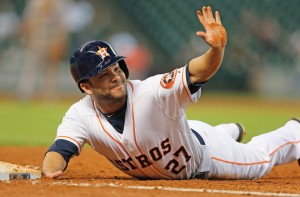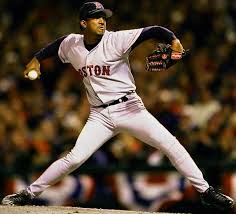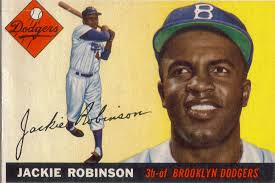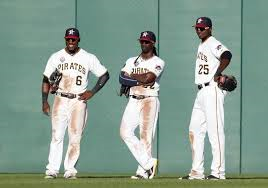I have been pre-occupied with life outside of baseball for a couple months. However, the second half of the season is officially underway and a major trade deadline comes in just 10 days. I’ll write a post about that in a few days, but for now I decided to bitch about the FOX television coverage of last week’s All-Star Game.
![images[4]](https://thecasualbaseballfan.files.wordpress.com/2015/07/images41.jpg?w=648) I hate watching sports programs on Fox Sports, but my dislike for Fox Sports has nothing to do with the political leanings of its parent company. However, like its “news” operation, Fox Sports has mastered the art of over-producing live sports and over-regulating its announcers. As a consequence, Joe Buck has become today’s version of the “bubble-headed bleach-blond” that Don Henley sang about two decades ago.
I hate watching sports programs on Fox Sports, but my dislike for Fox Sports has nothing to do with the political leanings of its parent company. However, like its “news” operation, Fox Sports has mastered the art of over-producing live sports and over-regulating its announcers. As a consequence, Joe Buck has become today’s version of the “bubble-headed bleach-blond” that Don Henley sang about two decades ago.
Those of you who know me have heard me rant about this before, but no one in TV land seems to care. Baseball fans mindlessly listen to the scripted drivel the spews from the Fox TV announcers as they “call” the baseball game. Let’s get one thing straight: Ernie Harwell was a baseball announcer. Ernie Harwell was not a friend of mine, but I listened to him for nearly a decade. Joe Buck, you’re no Ernie Harwell.
I often turn down the sound when I listen to Fox TV games because the announcers are so awful, but last week I subjected myself to a few innings of drivel because it was the All-Star Game and there are a number of young stars that I am curious about. True to form, the Fox producers could not help themselves and they ruined a perfectly good game.
Here is an excerpt for those of you who missed it….
Felix Hernandez enters the game in bottom of the 3rd inning. He gets the first out after two pitches.
Harold Reynolds [color commentator], “You know I asked Felix a few years ago, ‘What is your best pitch?’ and he said ‘all five. I can throw all five any time I need to.'”
Tom Verducci [another color commentator]: “And to borrow from Todd Frazier (the Cincinnati hitter who was on deck), that would be like asking Sinatra what his favorite song was. I mean, so many to choose from. I think it’s his changeup, the power change.”
Joe Buck [alleged play-by-play announcer]: “Sinatra also from NJ, Hoboken. Frazier, the Jersey kid.”
Meanwhile, the game is continuing. Andrew McCutchen strikes out and Todd Frazier comes to bat and they play Sinatra signing “Fly me to the moon” on the PA system at the ballpark.
Excuse me while I puke.
And so it went… When Madison Bumgarner, the San Francisco starting pitcher came into the game, all we heard were a litany of statistics from Joe Buck about Bumgarner’s performance in last year’s World Series, and how the KC All-Stars who were batting that inning (Lorenzo Cain and Salvador Perez) performed against Bumgarner eight months ago. Then, we were treated to several video clips from the 2014 World Series.
Every inning there is a new script. Very little time is spent talking about the game and there is almost no analysis of what is happening on the field.
My favorite baseball announcers – Ernie Harwell and Vin Scully — actually held a conversation with the fans as they explained events on the field. They understood the pace of the game and knew how to tell stories. The flow was natural and you followed the game as you followed the conversation, and the story never interfered with the game.
In stark contrast, the Fox crew receives a pre-game script and sits prepared to read it when instructed to do so. The perfectly-scripted coverage is boring because it is trite and predictable. The art of calling a game has been replaced by over-produced vignettes that have diminished the need for anyone who understands the game.

 Unfortunately, what makes him unattractive (in professional terms) is that he eats too much and doesn’t work out enough. In San Francisco he was a fan favorite and earned the moniker Kung Fu Panda because of his round shape. When he showed up in spring training for Boston this spring he looked more like a player on a beer league softball team than a major league infielder. Still, people gave him the benefit of the doubt, “Let’s see how he plays.”
Unfortunately, what makes him unattractive (in professional terms) is that he eats too much and doesn’t work out enough. In San Francisco he was a fan favorite and earned the moniker Kung Fu Panda because of his round shape. When he showed up in spring training for Boston this spring he looked more like a player on a beer league softball team than a major league infielder. Still, people gave him the benefit of the doubt, “Let’s see how he plays.”![images[9]](https://thecasualbaseballfan.files.wordpress.com/2015/05/images9.jpg?w=648)



